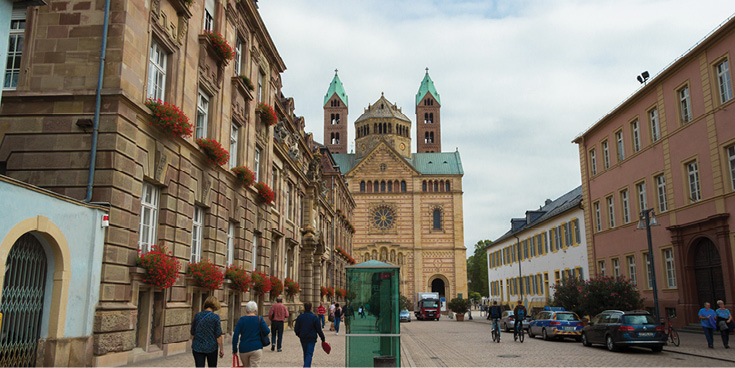Disclosure: Please note that some links are affiliate links, and at no additional cost to you, we earn a commission if you make a purchase.
If you would like to support this website in some way, using these links will help do exactly that.
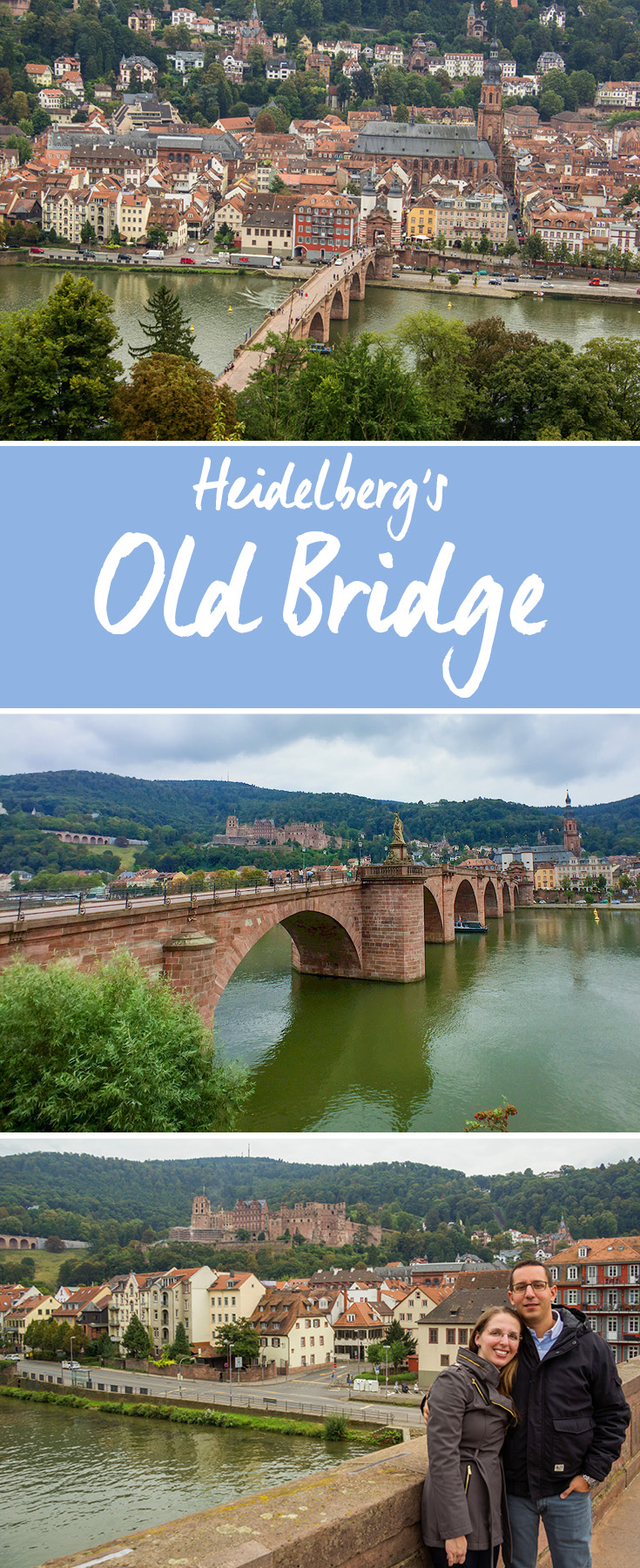
The Old Bridge, officially called Karl-Theodor Bridge, was built from 1786 to 1788 under Prince Karl Theodor, after eight wooden predecessors were destroyed by flooding and wars. It provides a great 360 degree spot for pictures of Heidelberg’s skyline complete with church spires, the castle, and riverfront homes.

Under Attack and Sabotage
If you look in the history books of Heidelberg, the Old Bridge is often mentioned as a place of warfare. The towers served as prisons and as the bridge guards’ domicile in earlier centuries. During the Coalition Wars (1792-1815) the French troops occupied half of the Palatinate up to the river Rhine, and attempted to conquer the Old Bridge, but did not succeed. The bridge you see today was rebuilt after WWII in 1947, when it was partly destroyed for the sake of a strategy. The German military blew up the fifth and sixth bridge pillars to prevent the entry of the American troops into Heidelberg. This approach to “secure” Heidelberg proved useless, the Allied Forces still made it over the bridge. From the 1970’s on, the bridge was modernized and adapted to serve a more modern infrastructure. Today the bridge can be driven on by vehicles between 6am to 10pm, so watch out for cars when you take selfies or watch boats float by. After 10pm, it serves as a pedestrian zone only until the next morning.
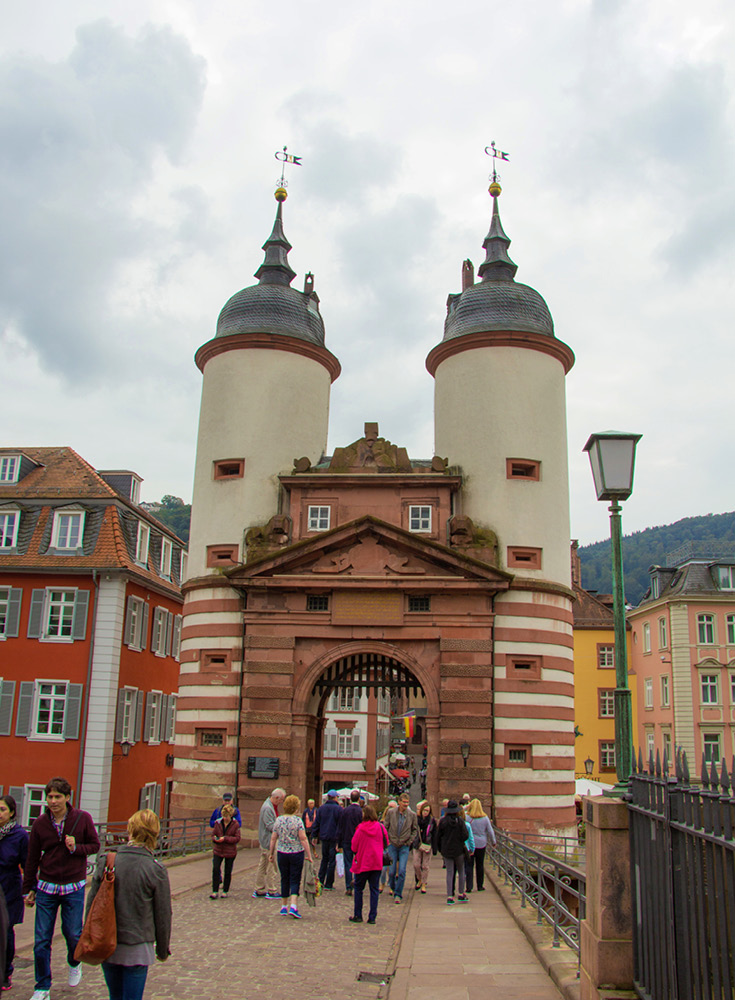
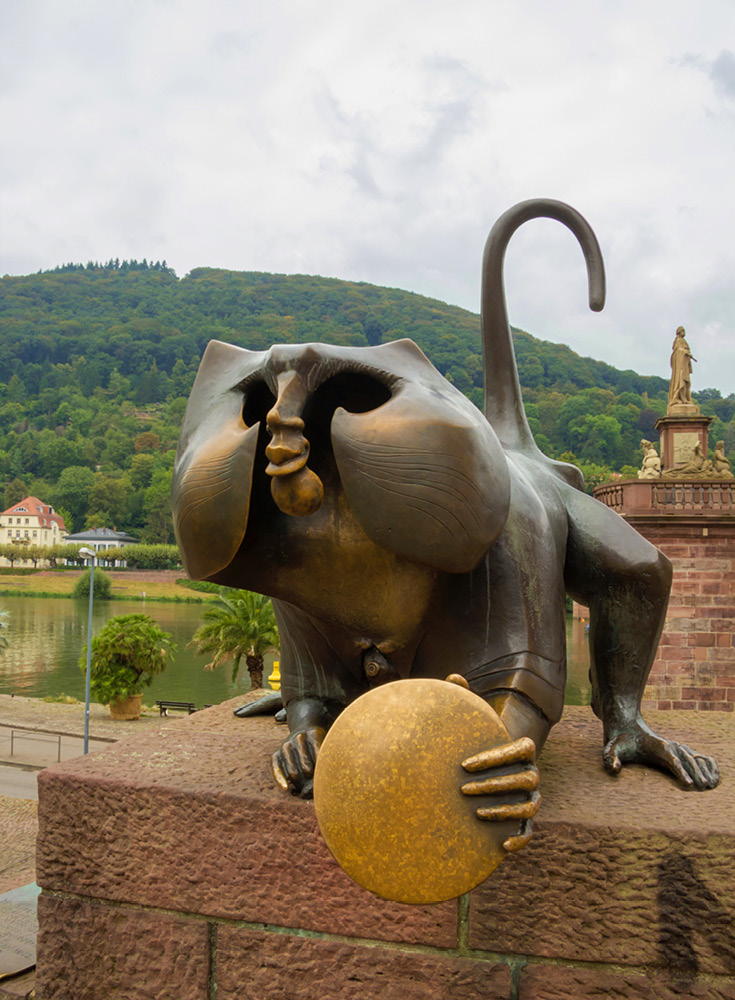
Can’t Miss the Philosophical Monkey
One piece not to miss within all the beautiful surroundings is the bronze monkey. A monkey figure as a city monument has already been mentioned in a poem by German author Martin Zeiller in 1632, which is still written next to the new sculpture (see below for the text). The old monkey figure of the 17th century was destroyed in 1689 and a new monkey was not created until 1979, when artist Prof. Gernot Rumpf re-created it. The new bridge monkey, like the original, holds a mirror in his hand. Everyone that looks or takes a picture of the monkey will see their own face in the mirror. Next to the monkey is a bronze plaque with the following inscription:
WAS THUSTU
MICH HIE ANGAFFEN
HASTU NICHT GESEHEN
DEN ALTEN AFFEN
ZU HEYDELBERG
SICH DICH HIN UNND HER
DA FINDESTU WOL
MEINES GLEICHEN MEHR
This translates to: Look around you or in the mirror, and you will see more specimens of this species. Basically the monkey is telling us not to take ourselves so seriously.
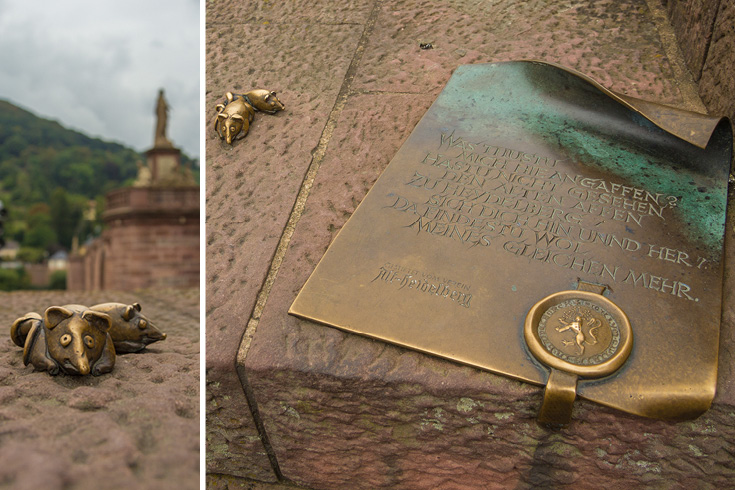
By the way: Beside the plaque you can see 2 mice, which is the creative “signature” of Prof. Gernot Rumpf, who has created the monkey sculpture and many more sculptures and fountains all over Germany. You can see more of his work here.
Follow Along
If you enjoyed this article, or these topics sound interesting to you, you'll love our weekly newsletter. You'll receive the newest posts each week and exclusive access to free planning resources like ‘Packing List & Tips for 2 Weeks in Germany’ and ‘Everything You Need to Rent a Car in Germany’.
Thank you for reading!

Frankfurt am Main is not only known as the European financial metropolis. The city is also one of the most important trade fair locations in Germany. Visitors and exhibitors alike appreciate the size of the exhibition grounds, in addition to Frankfurt's large international airport, the Autobahn and a sophisticated public transport network. Worldwide, only the exhibition grounds in Hanover, Germany are bigger than those in Frankfurt am Main.
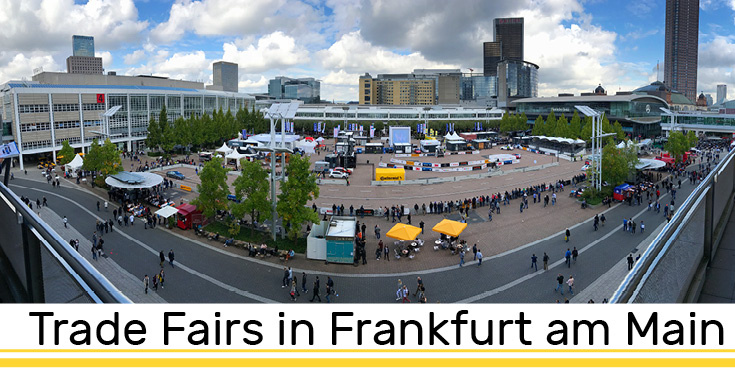
History of Trade Fairs in Frankfurt am Main
The first mention of the Frankfurt Trade Fair is in 1150, when the fairs took place in and around the Roemer marketplace in Frankfurt. During trade fairs in the middle ages, all the guesthouses in Frankfurt were booked, many trade fair guests were accommodated in private houses. While most stands were erected outside the Roemer building, goldsmiths and silversmiths as well as jewelers were given the most exclusive location: they were allowed to build their stands inside the Roemer for better protection of their precious goods. To read more about the Roemer, read our earlier article Deciphering the Roemer in Frankfurt am Main.
Thanks to Frankfurt's geographical location at the crossroads of important long-distance trade routes from and to Lyon, Venice, Antwerp, and Lübeck, the city was the hub of the flow of goods and meeting place for people from all over the world, together with the river Main as a favorable transport route. Everything was traded; from cloths and ceramics to books, cattle and more.
A special status was achieved by the privilege of Emperor Frederick II, who gave the fair visitors the full range of escorts during their return trip starting in the year 1240. Even during their stay in the city their security was ensured. The sequence during the fair weeks was roughly divided into four parts: the escorted arrival week, the actual business week, the week of payments and final dealmaking, and finally the departure week. In 1337, Emperor Ludwig granted the city of Frankfurt the privilege that no other fair could be erected throughout the Lands that could harm the Frankfurt fair in any way.
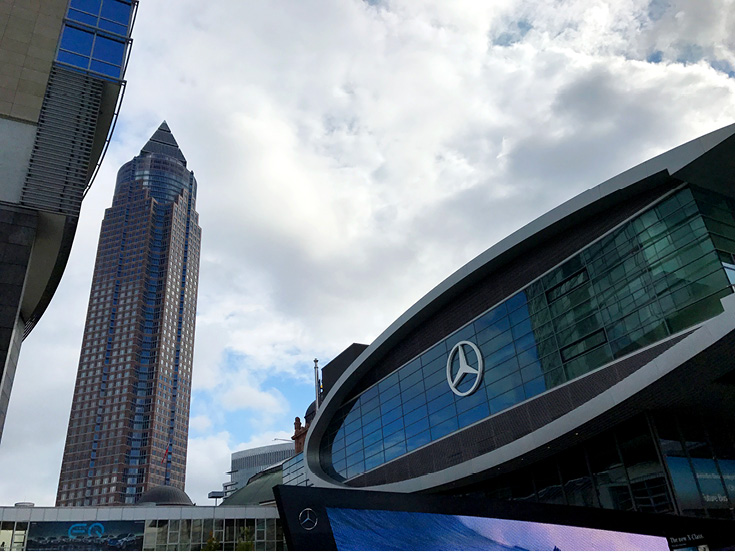
Frankfurt Trade Fair Landmarks
The most prominent building and also one of the highest skyscrapers in Frankfurt is the Messeturm - trade fair tower - with an altitude of 256.5 meters (841.5 feet) and a total of 54 floors. The Messeturm is, however, outside the trade fair grounds and is usually not used for trade fair events. Architecturally, its form stands out, which is why he is also called "pencil" by the people of Frankfurt.
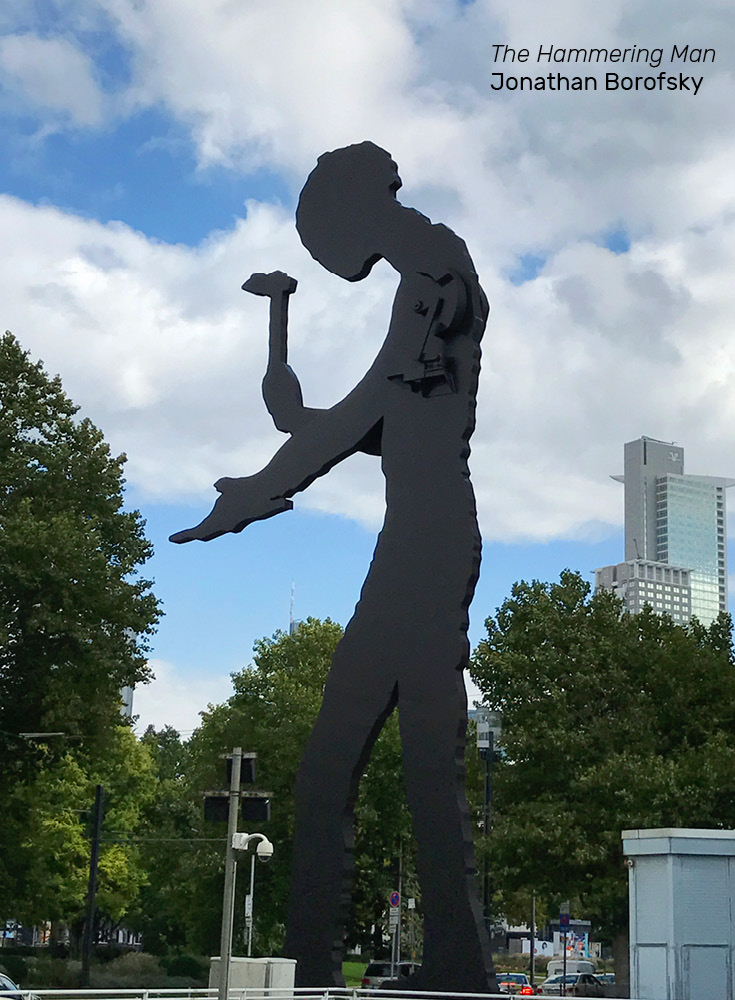
In front of the Messeturm you will find a large, black sculpture by the American artist Jonathan Borofsky called The Hammering Man. The black silhouette shows a worker who moves a hammer against a symbolic workpiece. This sculpture is meant to be a symbol of solidarity for all working people and can be found in various versions all around the world. The statue in Frankfurt am Main weighs 32 tons and was installed in 1991 for the “Art Frankfurt” trade show. This fair for modern art started in 1989 and was canceled due to lack of demand in 2007. The Hammering Man remained.
Today, the fairs in Frankfurt attract more than 1.5 million visitors every year. Every year, the world's largest book fair, Buchmesse takes place here, and the International Automobile Exhibition (IAA) is held every two years in Frankfurt. Most major car brands show all their models in various halls and my dad and I visit every time. This is what the halls look like inside during the International Automobile Exhibition (IAA).
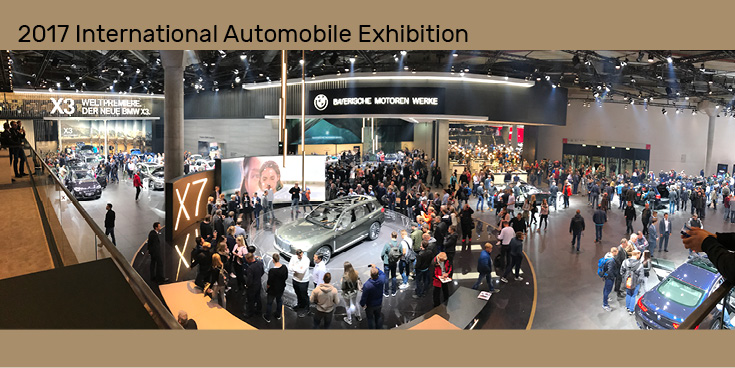
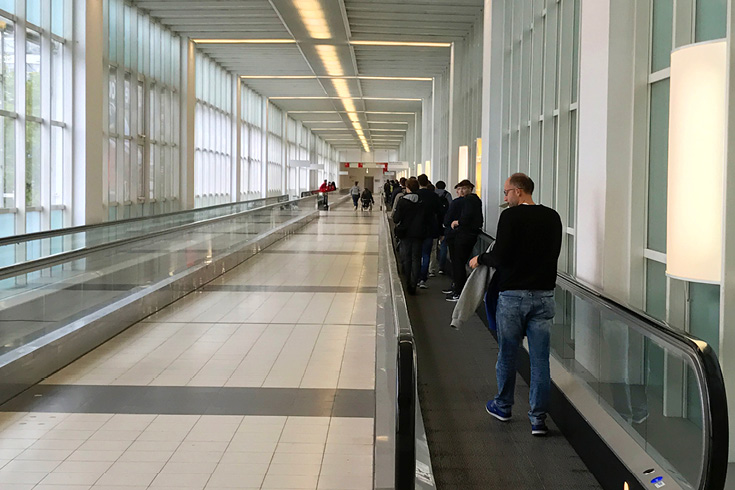
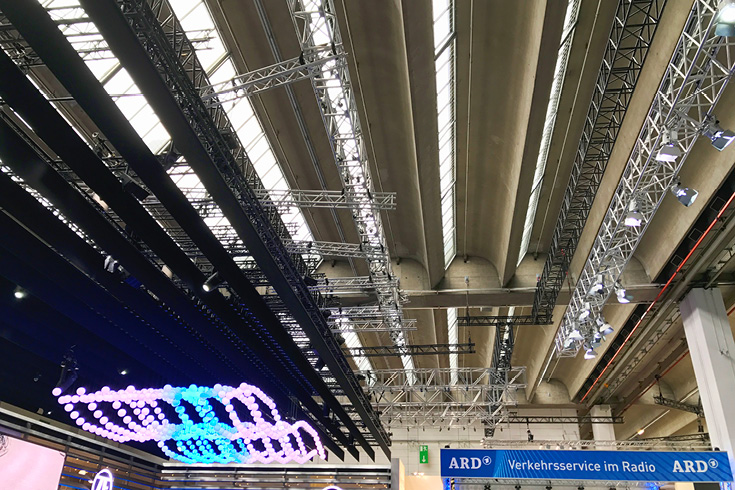
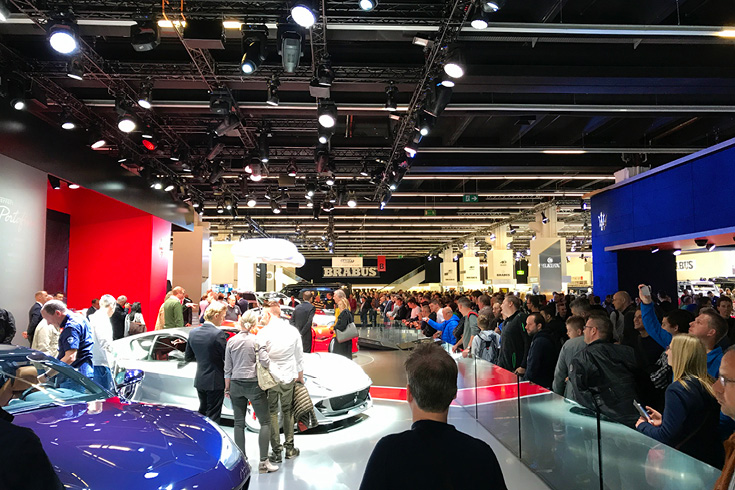
Festhalle in Frankfurt am Main
My favorite hall is the Festhalle, Festival Hall, built in 1907, and also the historic center of the trade fair grounds. It can hold up to 13,500 visitors unseated and is home to concerts, sporting events and Mercedes-Benz during the International Motor Show (IAA) every other year in September. The mixture of tradition and modernity is particularly evident during that time. You see old window panes and historic architecture meet the modern interpretation of beautiful cars by Mercedes-Benz. They also add a lot of light effects, that change every couple of minutes.
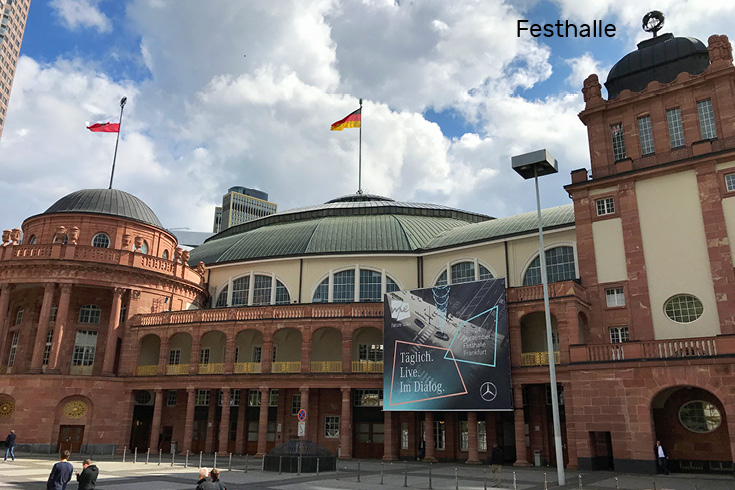
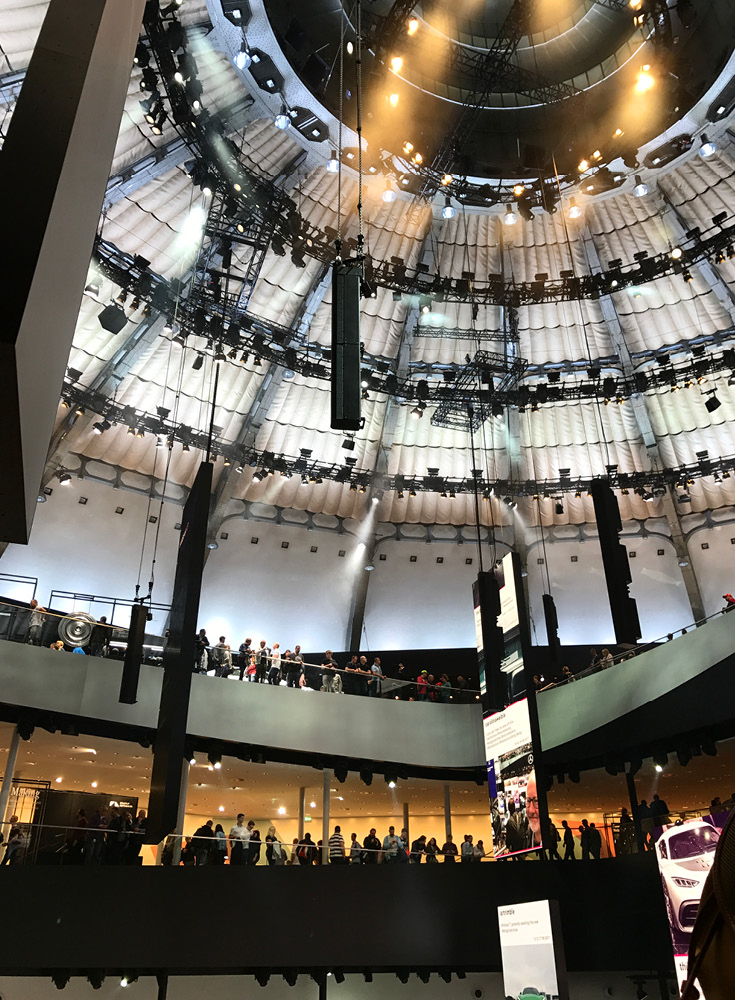
With a total of 11 exhibition halls, the exhibition grounds in Frankfurt offer space for all conceivable topics. Check out this video from Messe Frankfurt to see the whole trade fair grounds. Currently they are working on hall #12 which will be finished in the fall of 2018.
Follow Along
If you enjoyed this article, or these topics sound interesting to you, you'll love our weekly newsletter. You'll receive the newest posts each week and exclusive access to free planning resources like ‘Packing List & Tips for 2 Weeks in Germany’ and ‘Everything You Need to Rent a Car in Germany.
Thank you for reading!

While we were climbing to the top of every aviation and boat exhibit we were allowed in the Technik Museum of Speyer, we could see the Cathedral waiting patiently, a jewel box on the horizon. It certainly built the anticipation. The museum and the cathedral are close enough, and Germany is in general pedestrian-friendly enough, that it was an easy, safe walk from one to the other. One weird intersection with crosswalks and a street until you’re in the larger park leading to the cathedral.
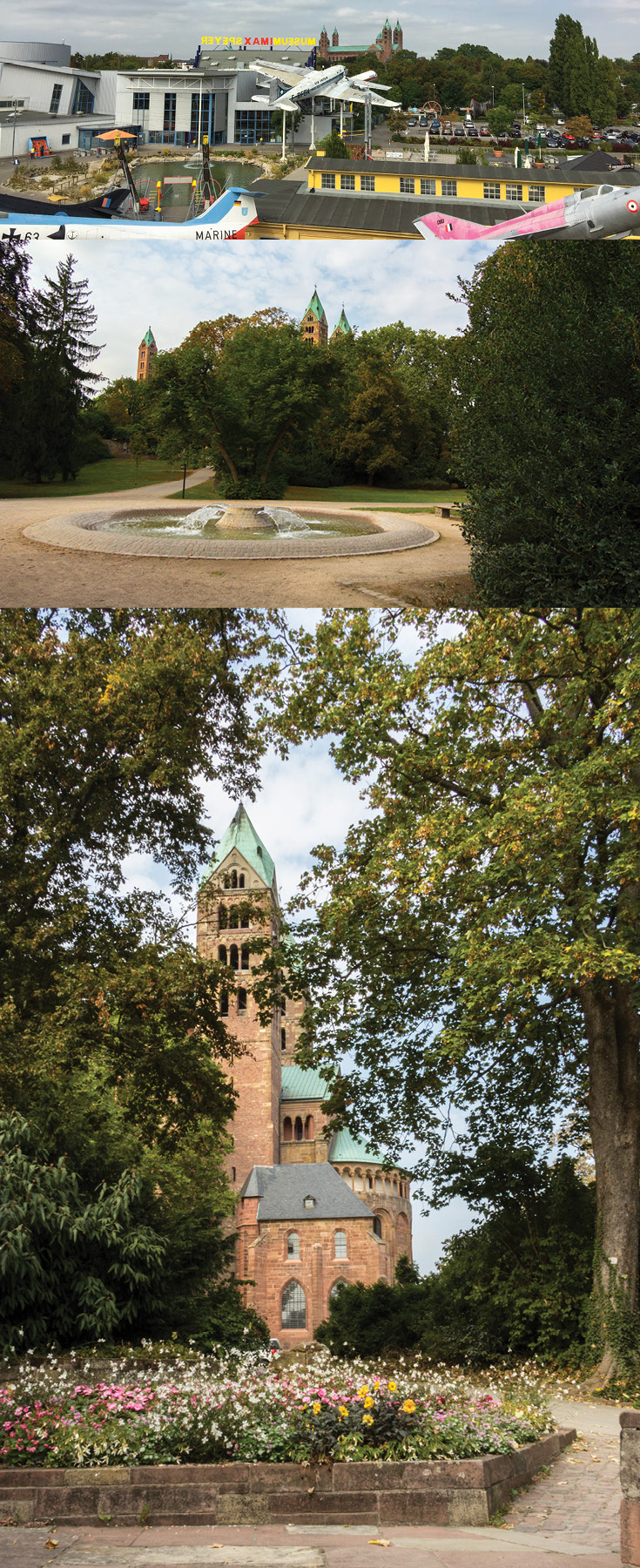
Largest Romanesque Architecture
You could describe this cathedral as so many firsts, largest, best. Being a part of the UNESCO World Heritage List tends to suggest as much. Speyer Cathedral, or Imperial Cathedral of Speyer, Kaiserdom zu Speyer, is the largest example of Romanesque Architecture in the World, the first building constructed entirely from stone in Europe, the first to have an exterior gallery and system of arcades around the entire building, a pilgrimage site, the resting place of 8 Kings and Emperors, and was the biggest church in the western hemisphere at the time of it's completion in 1106. Phew! To say this is a very important building feels like an understatement.
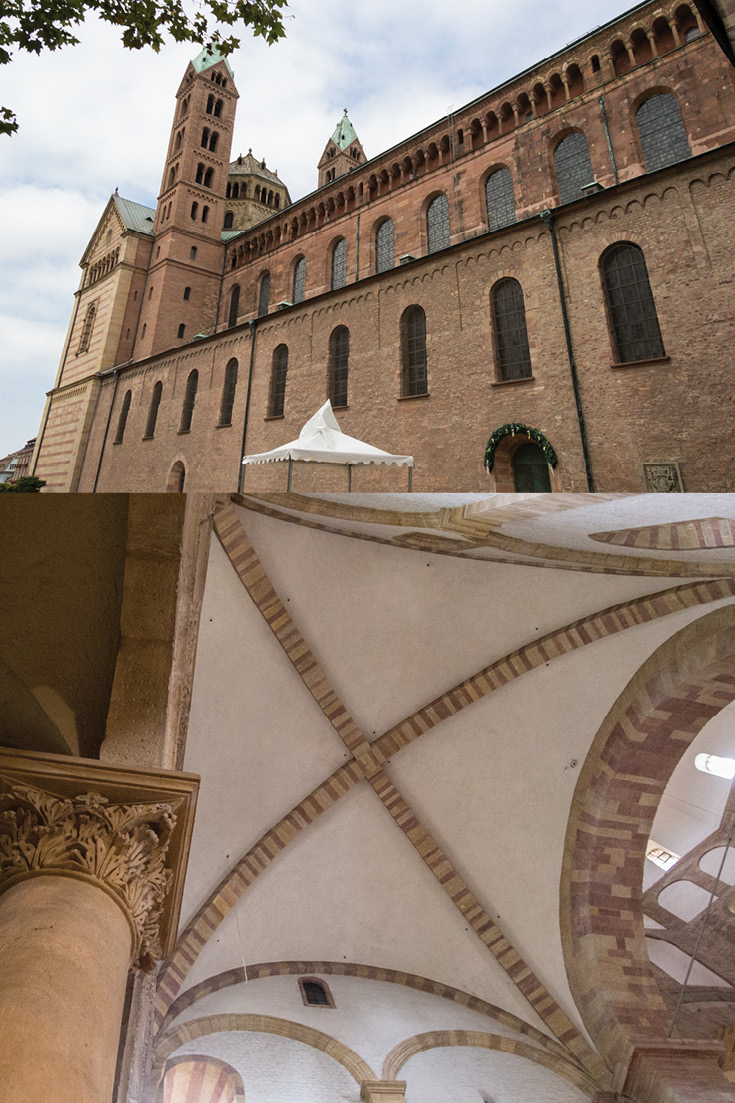
But, how does it make you feel? Personally, it was a calming, solemn, space. Not in anyway creepy as some older European churches are. With minimal ornamentation and varying natural colors shining purely from the carefully placed red sandstone from the nearby Palatine Forest Mountains, this cathedral is the most naturally beautiful church I’ve seen. I have to wonder if the architect Antoni Gaudi hadn’t once visited the Speyer Cathedral? The smooth, soaring semi-circular columns offers the same feeling of being in a quiet forest, just as I had felt in Gaudi’s Sagrada Familia in Barcelona, Spain.
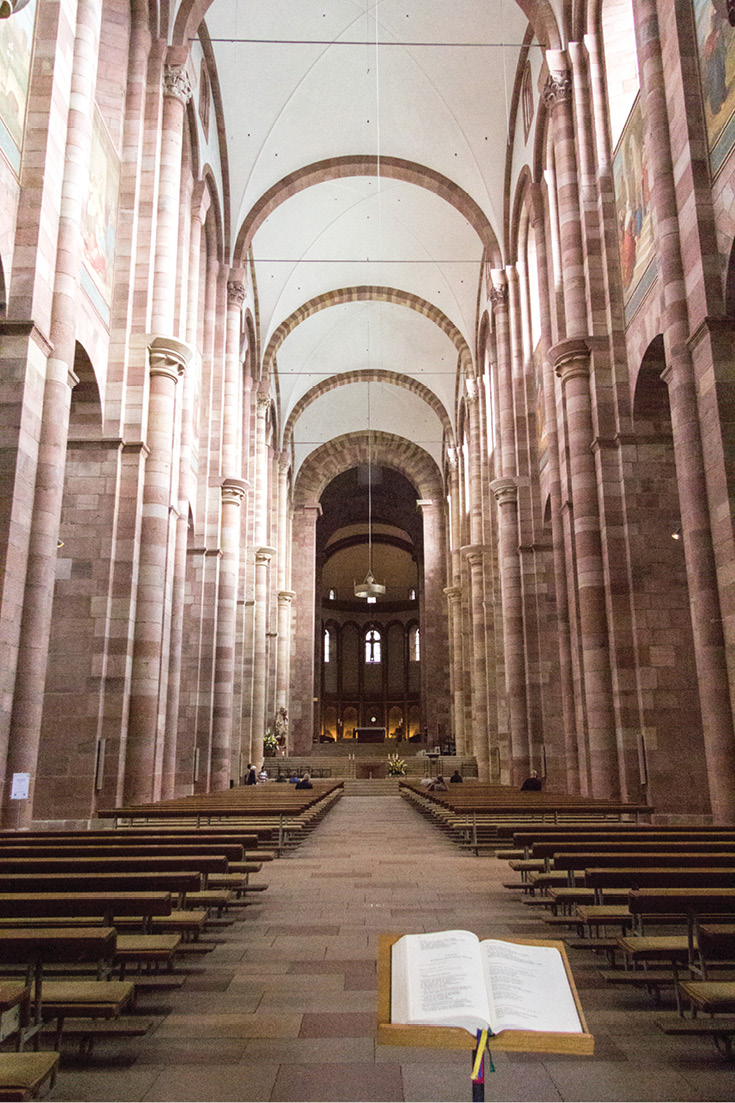
An Image Worthy of a Pilgrimage
A delicate, carefully painted standing Madonna statue quietly demands your attention at the front of the nave with fresh flowers at her feet and candles lit before her. This image, sculpted by German sculptor August Weckbecker, consecrated by Pius XI in Rome, was brought into the Speyer Cathedral in 1930. In doing so, the pilgrimage history for the Speyer Cathedral gained a new chapter to a centuries-long legacy.
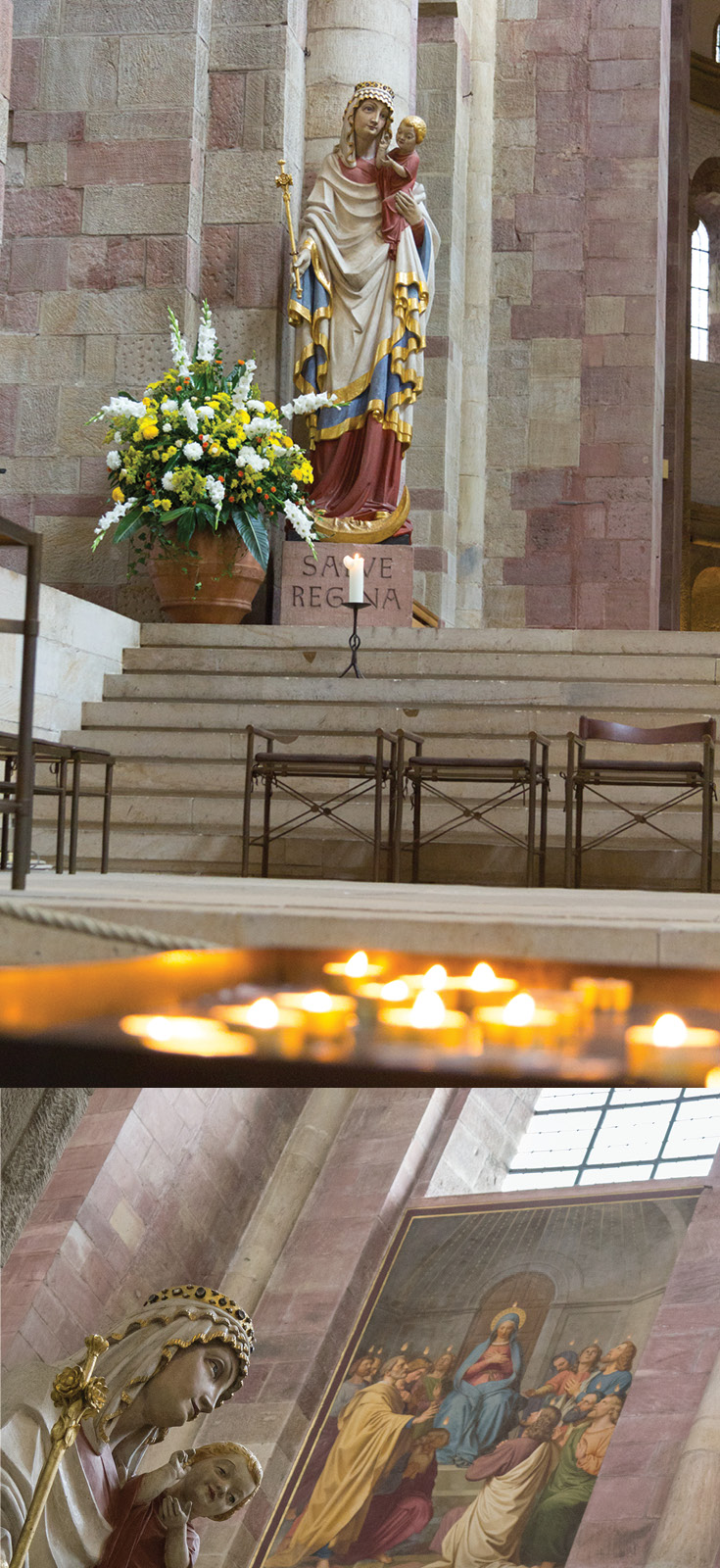
Also in honor of the cathedral's patron saint, the Blessed Mother Mary, along the walls of the nave is a 24-part series depicting Mary’s story painted by Johann von Schraudolph in the mid 1800s. These frescoes were part of an even larger installment and collaboration with Joseph Schwarzmann that was unfortunately removed in the 1960s in an attempt to make the cathedral appear more ‘romanesque.’ Some of the frescoes that were removed have been restored and are now in a new display in the Emperor's Hall of the Cathedral.
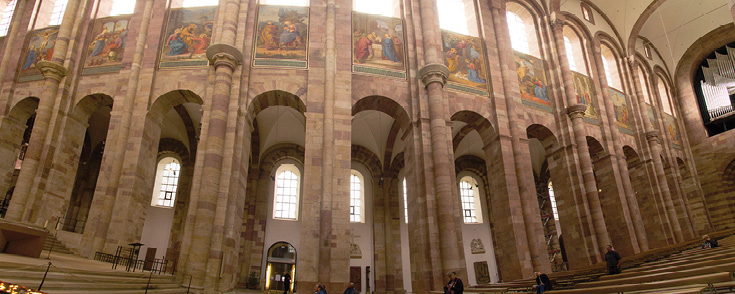
The Mount of Olives
Beside the Cathedral in a leafy clearing, you discover the sculpture ‘The Mount of Olives’, once part of the cloister grounds that were destroyed in the fire of 1689. What survived from Hans Syfer’s original piece was incorporated into the present day replacement by Speyer sculptor Gottfried Renn in 1856. A roof was built above the statue to prevent further wear and tear. Not sure why the roof has a rooster on top. Puzzling, but charming.
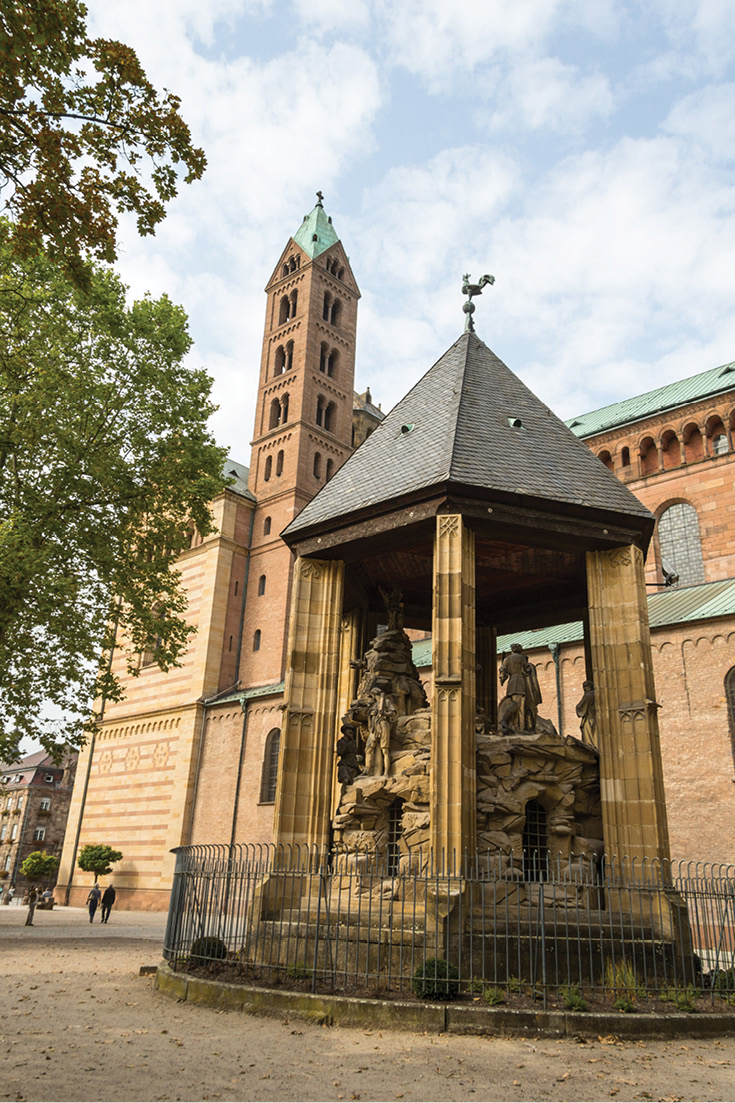
Speyer Cathedral Bowl
Outside the western entrance of the Speyer Cathedral stands the Cathedral Bowl. Many, many years ago it was often used as a loophole for those hoping to escape prison sentences, as the bowl marks the separate bishop and city territories. Prisoners would make a run for the bowl in order to be out of the city's jurisdictional area, now being protected by the church. And historically, to welcome a new bishop, the bowl was filled with wine for the citizens to freely enjoy.
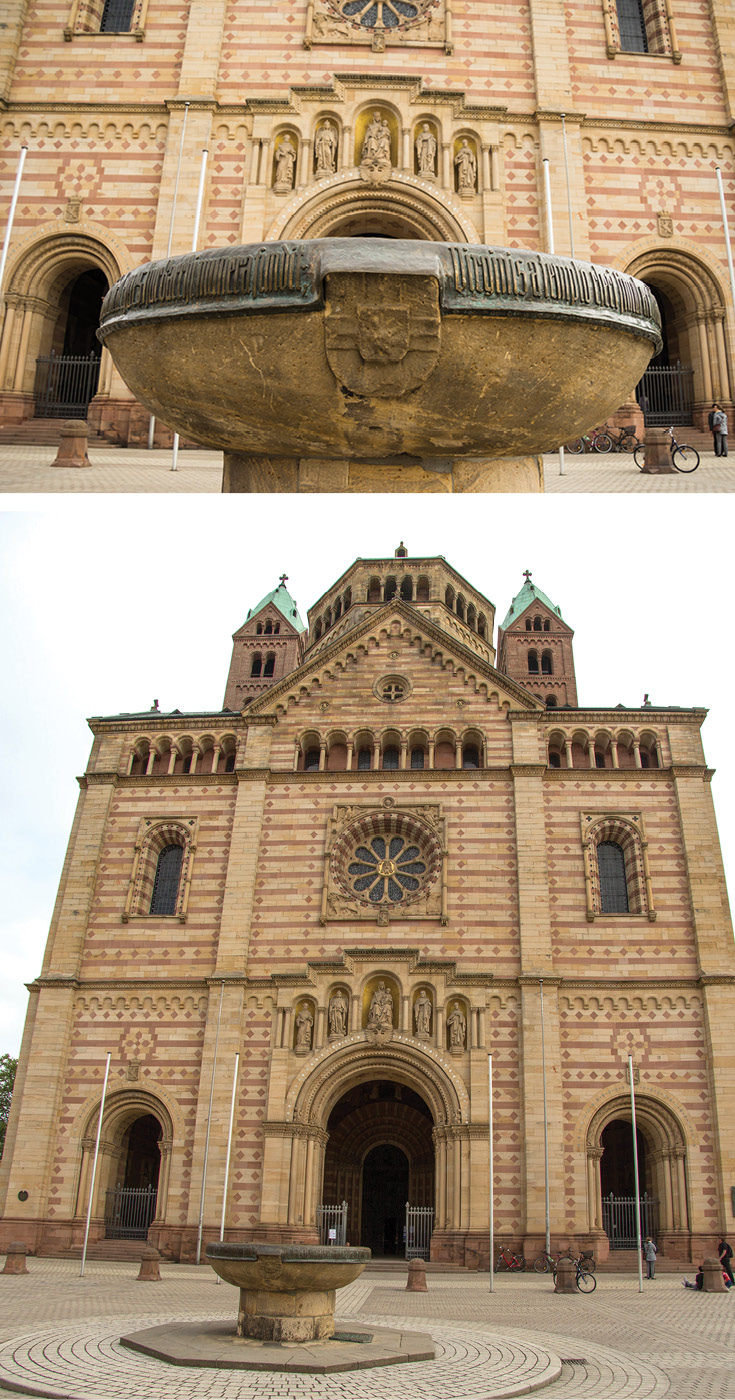
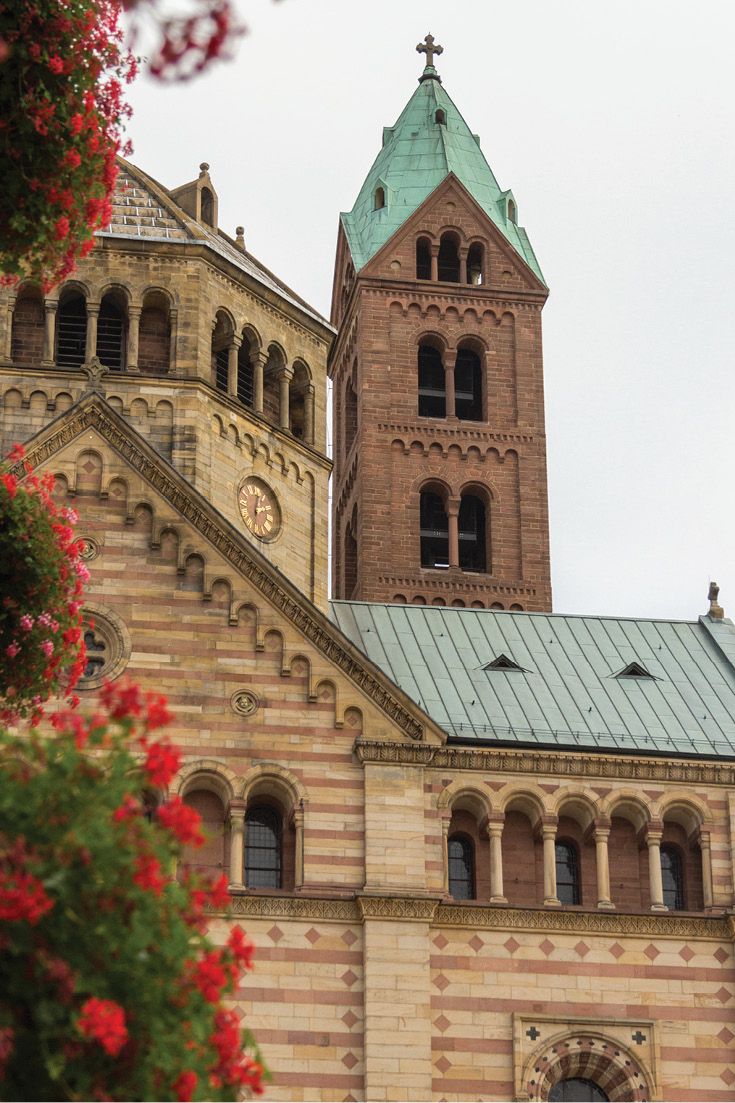
Follow Along
If you enjoyed this article, or these topics sound interesting to you, you'll love our weekly newsletter. You'll receive a free Germany Packing list for signing up, and you'll receive each week's newest posts every Friday. Thank you for reading!

